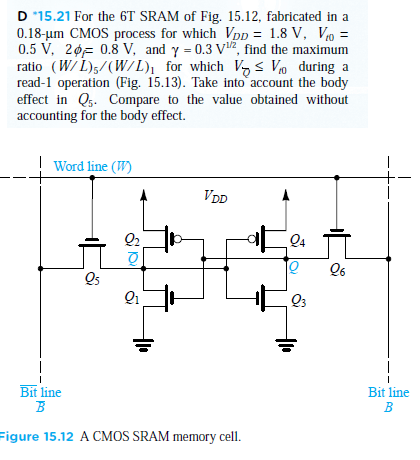D 15.21 For the 6 T SRAM of Fig. 15.12, fabricated in a 0.18−μm CMOS process for which VDD = 1.8 V, Vt0 = 0.5 V, 2ϕf = 0.8 V, and γ = 0.3 V1/2, find the maximum ratio (W/L)5 /(W/L)1 for which VQ ≤ Vt0 during a read-1 operation (Fig. 15.13). Take into account the body effect in Q5. Compare to the value obtained without accounting for the body effect. figure 15.12 A CMOS SRAM memory cell.
